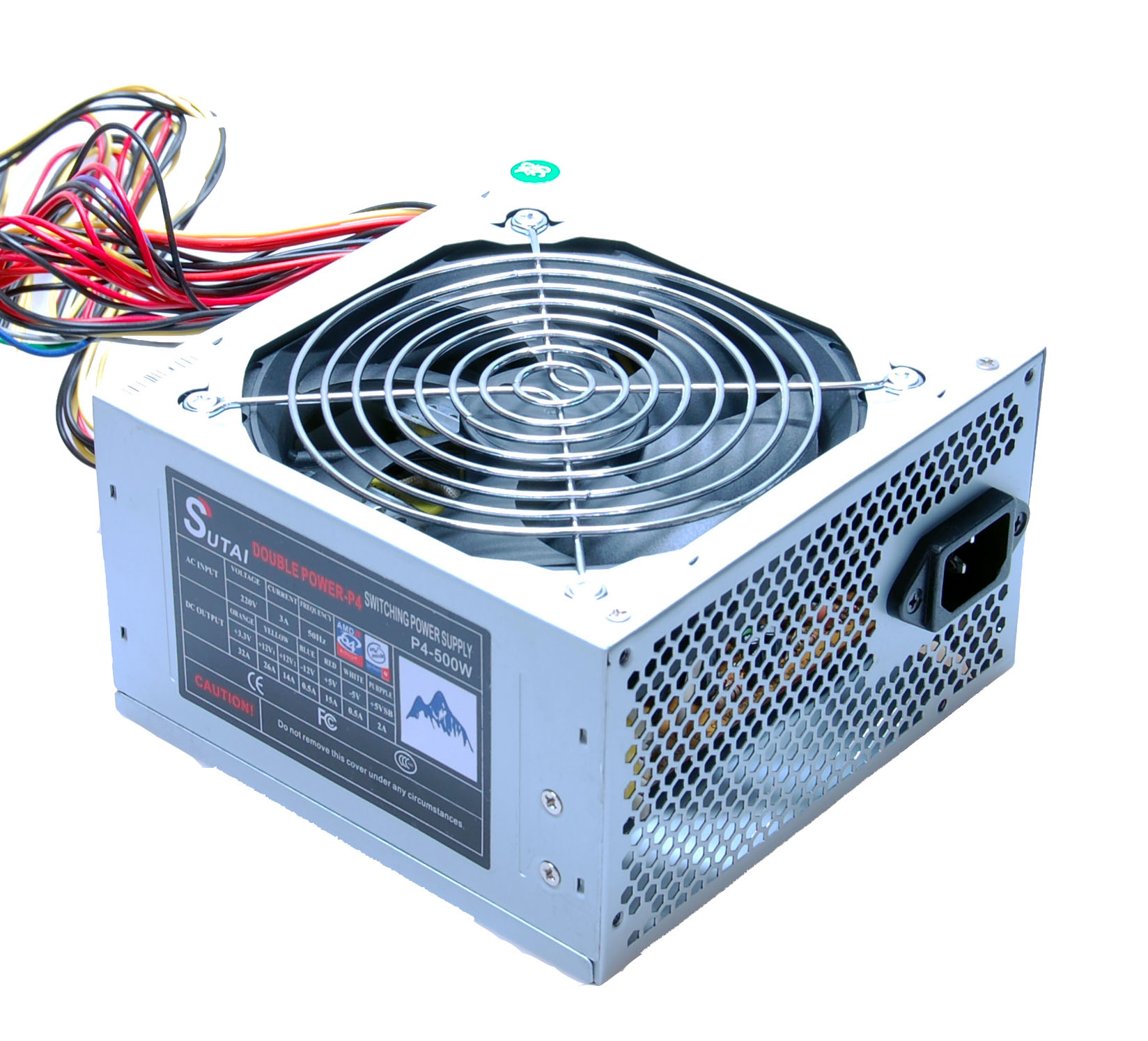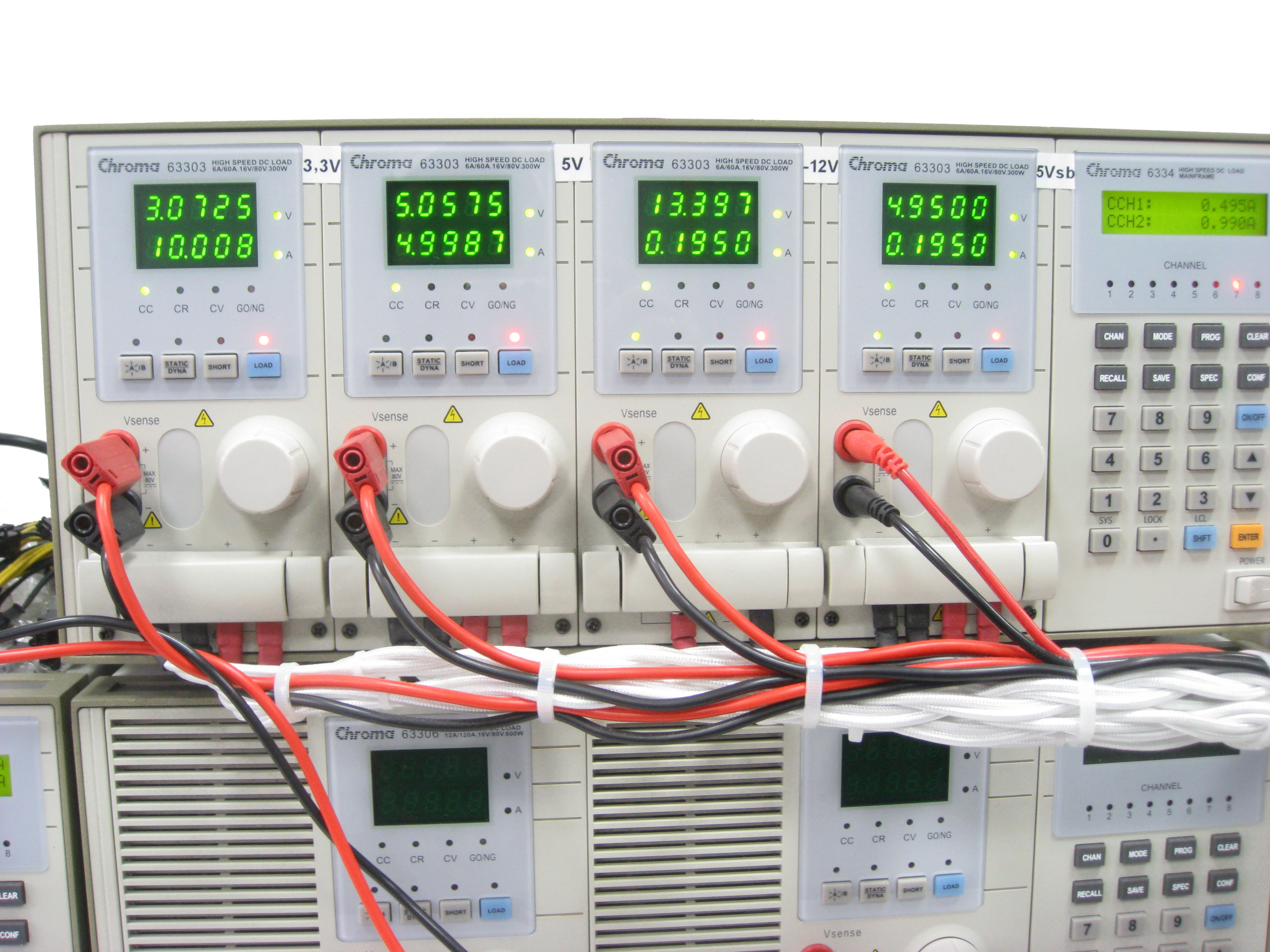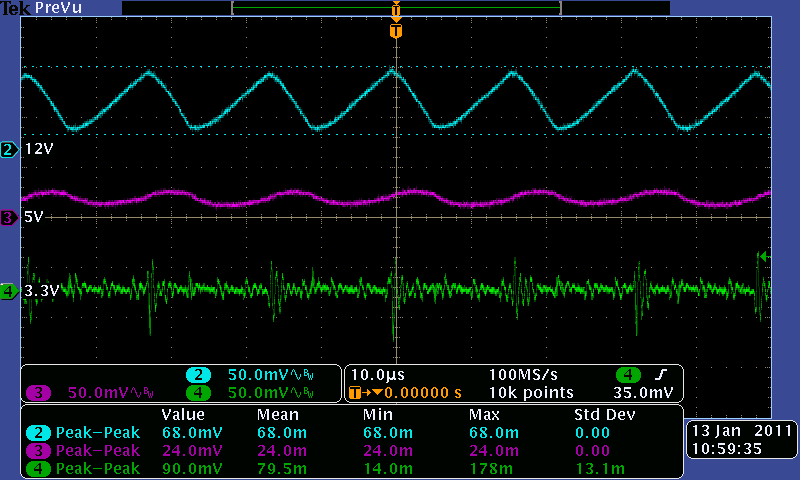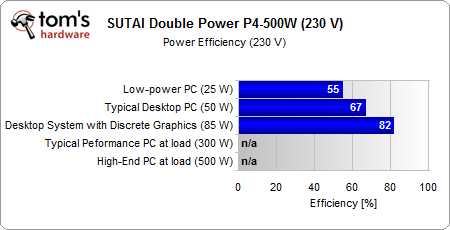Don't Be Surprised When Your Cheap PSU Blows Up
Sutai Double Power P4-500W
Right off the bat, the name Double Power promises more than this lightweight PSU (less than 1 kg) can deliver. Inside the 500 W PSU, there is a circuit board that takes up about 70% of the unit's base, with a generous 140 mm fan on top. The unit does not have a power switch.
The length of the cables and number of connectors is meager. Aside from the motherboard and CPU cables, there are just one SATA, three Molex, and one floppy connector. Using a graphics card with an auxiliary power connection requires a Molex adapter. The length of the heavily bent and uncovered cable is around 30 cm, or 12 inches.
Already during warm-up, the Sutai Double Power P4-500W gives away a serious design flaw: the airflow from the fan does not blow over the PSU components and PCB, but simply past the side of it. The air consequently flows (without doing much cooling) straight from the fan to the cooling vents on the back panel. Our airflow temperature test supports that impression, as the escaping air has nearly the same temperature as the air in the test lab.
Although this weakness alone concerned us, we decided to put the Sutai Double Power P4-500W through our tests anyway. The very first test, reviewing efficiency at 100% load, did not go very well. Even at just 300 W the PSU repeatedly shut itself down.
We managed to gather some maximum load values for the different voltage rails. The 3.3 V rail, for example, has a claimed maximum load of up to 32 A, but anything above 10 A causes this PSU to shut down, despite other rails hardly being used at all. We could not even begin to test the two 12 V rails. Rated at 26 and 14 A respectively, the PSU shut itself down long before we even got close to those numbers. At combined loads as low as 270 W, the voltages on the 3.3 V and 12 V rails were already falling below values required by the ATX specification.
Nevertheless, we conducted our tests at 50% of the maximum rated load (250 W), in order to generate some test scores. Efficiency was around 69% at this load level, and it decreased rapidly at higher loads. The efficiency reached its maximium value of 81% at a load of only 20% (100 W), suggesting that this is probably not a 500 W unit, but rather a relabeled 250 or 300 W unit. Ripple and noise measurements resulted in 3.3 V values that were already well out of the ATX specification at a 50% load, and most likely much worse so at higher loads. By the end of our testing, we could clearly smell the overloaded PSU components, and the unit was noticeably hot in some spots.
The Sutai Double Power P4-500W PSU does not have anything at all in common with a modern, reliable, and efficient power supply. The build quality is abysmal, the packaging questionable, and the results are, to put it gently, a good reason to stay away from this brand altogether. Let's take a look at its second unit.
Get Tom's Hardware's best news and in-depth reviews, straight to your inbox.
Current page: Sutai Double Power P4-500W
Prev Page 1670 Watts For $60? Next Page Sutai Double Power P4-750W


